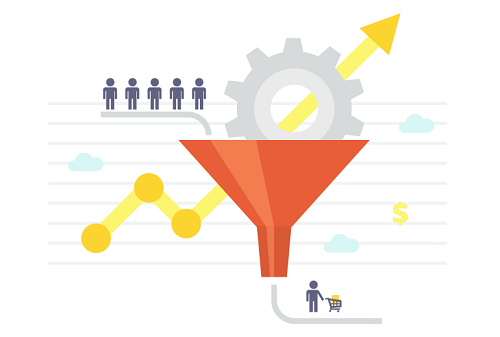Outbound Marketing: How to Find Quality Leads and Convert Them
by Black Ink Team

The term ‘outbound marketing’ or ‘outbound sales’ refers to when someone at an organization (or someone who represents them) approaches potential customers to see if they can convert them. An easy way to remember this is that, instead of trying to entice existing customers who are ‘in’ your pool of existing customers, you are communicating with non-existing customers who are ‘out’ of your CRM. Targeting ‘leads’ or ‘prospects’ is another way to describe outbound sales. Market penetration (more people buying the product overall) and market share (less customers going to your competitors) can both be increased through outbound sales.
Successful outbound selling starts with good prospecting. ‘Prospects’ are people or companies who would potentially be interested in buying your product. They must have a reason to want the benefit that your product will give them and be able to afford it, plus your organization must be able to reach them. If they are a company, then the prospect information must include the contact information for whomever is qualified to approve the purchase. The more detail you have on your prospects, the better, because then your selling methods can be streamlined to match their preferences. Furthermore, incorrect data can be a problem, since prospects may be confused or angry if you contact them with misinformation.

Initiating contact with prospects can be done in many ways. Direct mail, personalized emails, and phone calls are just a few examples. Nowadays people are sometimes easier to reach through social media, so that is a channel your organization could use too. It can be beneficial to utilize multiple methods, but some customers can be put off if your marketing efforts come across as being aggressive. Your first communication should be quick but informative, telling the prospect what they stand to gain from switching to your product. Discounts or other incentives can help improve conversion rates, but a cost-benefit analysis should be run first to ensure you aren’t adding too much to your bottom line. Lastly, some prospects may need to be contacted more than once, so you shouldn’t remove them if you have only made one attempt.
Customer referrals are one of the biggest sources of prospect information. To drive customer referrals, you can implement loyalty programs where customers who successfully refer new customers can get rewarded. Also, you can make it easier for customers to refer people in the first place, for instance by implementing web-based referral forms. Another big source is newsletters – if your organization can produce interesting enough content, people may sign up and give you their information. Speaking of content, you may also find prospects through social media. The people following your accounts are a good place to start, because obviously they are interested in your brand. Finally, if you are targeting professionals such as landscapers or contractors, industry networking events and trade associations are good resources.
